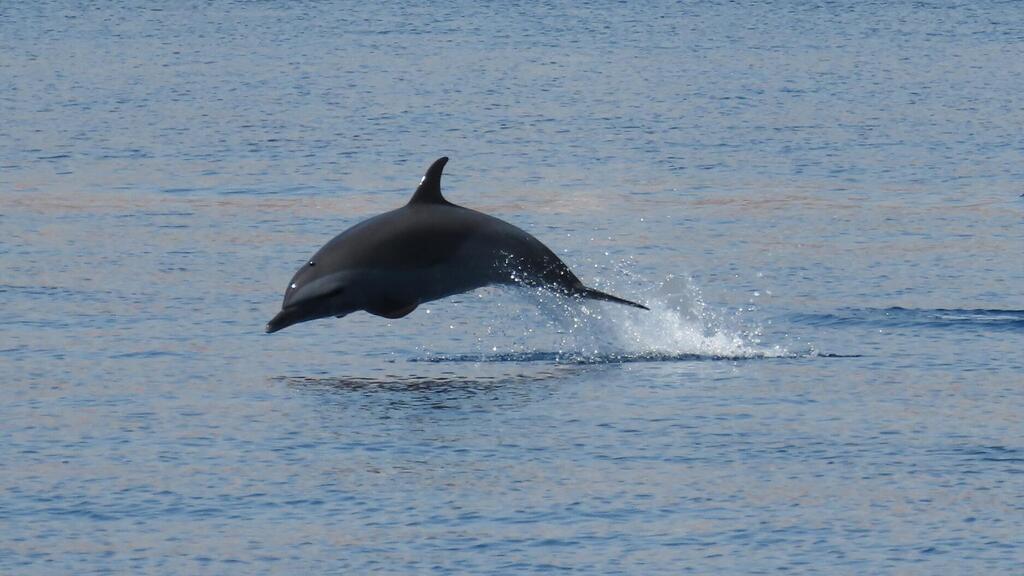In an unprecedented event, two distinct species of dolphins were observed swimming together as a unified group. This unique assembly consisted of dolphins from the Stenella attenuata species and the Stenella longirostris species.
Dolphins spotted
(Video: Omri Omasi, Nature and Parks Authority)
Omri Omasi, who serves as the Marine Inspector for the Eilat area under the Nature and Parks Authority and was responsible for recording these dolphins, shared his experience. "I was alerted by a local fisherman, Arik Torgeman, about a collection of dolphins in the coral reserve deep in the sea. Upon embarking on a tour of the reserve, I spotted a group of dolphins leaping from the depths of the sea around the boat within just a few minutes," he said.
"As I approached, I recognized that these were two separate groups of dolphins from the species Stenella attenuata (Pantropical Spotted Dolphin) and longirostris (Spinner Dolphin). This group, comprised of dozens of dolphins, was moving rapidly in the deep sea. This marks the first and thrilling documentation of these two dolphin species cohabitating as a single group in the Gulf of Eilat," Omasi said.
Daphna Feingold, a coordinator for the Red Sea observations from the Dolphin Society, further added that the Red Sea is home to two Stenella species – Attenuata and Longirostris. Both species are noted for their relatively small size, high agility, fondness for riding on a bow wave and tendency to travel in large packs.
Feingold said that the Stenella attenuata is a prevalent species in the Red Sea, possibly the most common. "We see groups from this species across the Red Sea, primarily in the northern region and in our part of the Gulf of Eilat," she said. "They make their presence known in our territory several times throughout the year. The long-snouted Stenella species are also abundantly found in the Red Sea, but are less visible in the Gulf of Eilat. Most sightings occur in the southern Red Sea, as they typically rest in shallow lagoons during the day and venture out for hunting at night."
She further added that the two species are strikingly similar, making it challenging for those untrained to distinguish between them. "Upon reviewing the footage from the Gulf, it was apparent that we were observing a mixed group comprising these two species," she explained. "Although the mingling of these two species is a well-known phenomenon in the southern Red Sea, the Indian Ocean, and the Pacific, this is the first instance of verified and filmed evidence of such interspecies interaction in the northern part of the Gulf."




